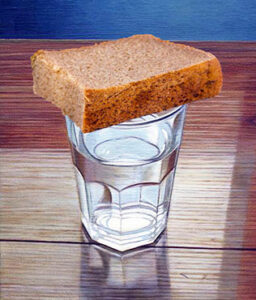Cardio workout
Cardio training, or cardiovascular training, is undoubtedly important for improving the overall level of physical fitness and improving health, because they help:
- Improve heart and lung function;
- Strengthen muscles;
- Improve blood circulation;
- Improve sleep and mood;
- Reduce the risks of heart disease, hypertension, and diabetes.
Traditional cardio exercises include:
- Running/walking;
- Cycling;
- Swimming:
- Rowing;
- Tennis;
- Dancing, cleaning the apartment, mowing the lawn, etc.
Recently, with the increasing popularity of HIIT workouts, in addition to traditional exercise machines, are also used:
- Punching bags;
- Ropes;
- Skipping ropes;
- Kettlebells, tires, etc.
When choosing a specific cardio load, it is necessary to take into account not only the level of physical fitness, but also how often exercises are performed, what is their intensity, how long they are performed, and, of course, whether they bring us pleasure or vice versa 😊 .
Let's look at all these factors in turn.
1 Frequency of cardio workouts
Low-intensity cardio can be done every day, whereas high-intensity cardio requires more rest to avoid the risk of overtraining.
For general health, it is recommended to conduct short-term (~ 20 minutes), daily, low-intensity cardio;
If you want to improve your physical fitness and fitness level, it is recommended to conduct high-intensity cardio training from 3 to 5 times a week.
Start slowly - with low-intensity cardio workouts, then gradually move on to more intense workouts 1-3 times a week. Evaluate how quickly your body is recovering, and when your fitness level improves - slowly increase the intensity and/or the number of workouts.
2 Intensity of cardio workouts
Intensity describes how hard you work during cardio. As a rule, the more intense the workout, the longer the recovery time of the body.
How to determine the intensity of the load during a workout:
- Speech test:
- If you can talk freely while performing the exercise, the intensity is low;
- If you breathe harder while performing the exercise, but you can still hold a conversation - the intensity is medium;
- If during the exercise it is already difficult for you to breathe and between inhalation and exhalation you can say only a few words abruptly - the intensity is high.
- Heart rate measurements. At first, you need to determine your maximum heart rate, then your target heart rate zone, and check whether your heart rate is in this zone during or between exercises. Read more about pulse zones HERE;
- Oxygen consumption testTesting oxygen consumption or VO2 levels during a workout is the most accurate way to measure the intensity of a workout. To perform the VO2 test, you need to contact one of the sports medicine institutions. During physical exercise (usually a treadmill or exercise bike is used), the amount of inhaled and exhaled air is measured. As a result, your maximum heart rate is determined, which allows you to more accurately determine the target heart rate zones and measure the intensity of the exercise.
However, we do not always follow the recommended level of intensity of training, because it is widely believed that the harder we train, the sooner we will see the body of our dreams in the mirror. And we really want our bodies to change faster. This often leads to injuries.
Therefore, if you experience any of the following symptoms, stop exercising and seek medical attention:
- Extreme shortness of breath;
- Chest pain or pressure;
- Excessive sweating;
- Dizziness or fainting;
- Severe muscle pain or cramps;
- Severe joint pain;
- Extreme and prolonged fatigue after a workout.
3 Duration of cardio workouts
How long should cardio workouts be in order for you to benefit from them – improving your health and physical condition or increasing your level of physical fitness?
People aged 18 and older are recommended:
- At least 150 minutes of moderate-intensity physical activity each week.
OR
- At least 75 minutes of high-intensity activity each week.
OR
- An equal mix of moderate and high intensity activities.
The World Health Organization recommends performing cardio exercises for at least 10 minutes. As a body warm-up for a subsequent higher load (strength training, TRX or HIIT, etc.), this is enough, but it is too little to improve overall well-being or "fat burning".
Although, of course, it's better than nothing -😊.
There is no recommended upper limit on the duration of cardio workouts. However, you should not overdo it with cardio workouts either - by skipping workouts one or two days a week, you allow your body to recover and avoid injuries and emotional burnout.
What happens to us if we train too much, read HERE.
How much time should be spent on cardio?
It depends on your goal and level of physical fitness:
- 10 minutes:
- It's a good start if you're new to exercise, recovering from an injury, or over 60;
- 10 minutes is the perfect duration to warm up - to get your body used to the movements.
- 10 minutes of cardio is also recommended before strength and high–intensity workouts - you increase your heart rate (the faster the blood circulates, the better the body is supplied with oxygen), and you also have enough strength for further exercises. Read more about how energy is generated and used in our bodies HERE;
- 10 minutes of cardio is also a good way to relax after work. A 10-minute walk, jog, or other activity will help clear the mind and relax the body.
- 20 minutes:
- 20 minutes of cardio can help increase your body's endurance without straining your muscles;
- Or, if you already have good endurance, 20 minutes is the perfect workout length to challenge yourself and shorten your workout time, for example, by doing a HIIT workout.
- 30 minutes of cardio is ideal for building endurance;
- 45 minutes of cardio is suitable for those who already have experience with endurance training. Such longer cardio sessions can help maintain a high level of muscular endurance;
- 60 minutes of cardio is recommended only for athletes or if you already have many years of experience in endurance training and you want to further increase your endurance level.
How to choose the most suitable one for you? Listen to your body and don't force yourself to work harder or longer if you don't feel comfortable anymore.
4 Types of cardio workouts
Any activity can be considered cardio training, as long as your heart rate (exercise level) corresponds to the low-intensity zone - 60 to 70% from MHR. The norm of heart rate is approximately 120-135 beats per minute (depending on age).
That is, if you clean the apartment, work in the garden or just walk or climb the stairs to your apartment, and your heart rate accelerates to 60-70% of MHR - you are doing cardio.
The most common types of cardio workouts:
- Low-impact training - is training during which the impact/load on the joints is low. But this does not mean that the training intensity or energy consumption is low - activities such as swimming may not put a lot of stress on the joints, but you can burn up to 300 Kcal in half an hour (depending on the person's weight and the intensity of the exercises);
- High-impact training is training that puts a lot of stress on the joints. For example – running, jumping rope, and other plyometric exercises. In addition to burning more calories (compared to low-impact workouts), high-impact workouts also significantly increase bone strength. High-impact workouts are not suitable for people with a lot of overweight, as overweight also creates additional load on the joints and, therefore, significantly increases the risk of injury;
- Steady-state cardio is low or moderate-intensity exercise during which you work at a steady pace throughout the workout. For example, a half-hour long run or bike ride at a steady pace. This type of cardio is ideal for beginners because it is simple and of moderate intensity;
- High-Intensity Interval Training (HIIT) is a workout in which periods of high intensity cyclically alternate with periods of low intensity. They take cardio training to another level, because during a period of the high intensity you work at the limit of your capabilities — you challenge yourself by leaving your comfort zone. HIIT intervals are not timed, but since the energy consumption during high-intensity periods is very high, these intervals usually last only 30-60 seconds, followed by a low-intensity period two or three times longer;
- Circuit training is a workout in which a series of exercises with different weights or resistance is performed for different muscle groups for a certain time or a number of repetitions. When the exercise series is finished, it is repeated over and over several times;
- Kettlebell training. Yes, kettlebells can also be used for cardio training. What's the difference? In strength training, the emphasis is on kilograms and repetitions, and a rest/recovery period follows after each approach. In cardio training, kettlebells are used to create an additional load, and they are not lifted, but rocked. No breaks for a rest. For example, like in this video.
If you have a specific goal (for example, to run a marathon), your trainer will decide on the most suitable type of cardio training.
If your goal is simply to improve the functioning of the cardiovascular system, you can use any of these types of cardio workouts or combine them at your discretion. The main thing is not to overdo it with the duration and intensity of the workout.
5 The enjoyment
At first, it is usually absent. However, after some time, regular physical activity becomes an integral part of life for many.
For many, does not become.
People usually quit sports not because they are lazy, but because they don't like the process itself. Because they don't like the exercises that their coaches ask them to do, or, if they train on their own, those that they have seen in the list of "latest and most effective" exercises on YouTube or in some social media account.
As with the beginning of the new year, we usually decide to "change our lives", and this decision usually fades after a month or two.
Why?
Because we don't see the result and we don't enjoy the change.
It's the same with training, so:
- Start slowly. With simple movements that even the most tired, grumpy, and pain-sensitive person can do (and hopefully enjoy) - for about the first 10 minutes;
- Try to mix cardio exercises with strength, endurance, and stretching exercises;
- Change the order of exercises - to get new experiences and avoid boredom;
- Listen to cheerful music that motivates you to move during your workout;
- During the rest period, do not be shy to start a conversation with your coach or other club visitors - socializing also helps you enjoy training.
Frequency of cardio training
You know - there are no specific rules. The frequency of cardio training depends on your goals, your level of physical fitness and intensity of training, as well as how you feel during and after the workout.
Regular cardio workouts:
- Improves heart function and cardiovascular health;
- Helps improve sleep quality, especially if you exercise several hours before going to bed;
- Improves blood circulation and helps regulate blood pressure;
- Improves the body's ability to use fat as an energy source, which can help reduce excess weight (if you have it);
- Improves lung function and overall respiratory health;
- Improves mood, increases energy, and reduces stress.
However, if the cardio will be too much:
- Physical and mental exhaustion may occur;
- You can lose muscle mass (if the amount of energy intake is insufficient, the body gets energy from muscle tissue);
- You can get injured due to overtraining.
Key takeaways
Cardio helps reduce fatigue and improve mood.
Over time, you will notice that your body becomes slimmer and stronger. Your confidence in yourself and your abilities will increase, you will like your image in the mirror more and more, and all this together will motivate you to continue what you started.
When to start?
The most appropriate time is immediately, right now!
Remember, you will be doing this for yourself.
Sources:
High-intensity Interval Training. A Time-efficient Strategy for Health Promotion?
High-intensity interval training for health and fitness: can less be more?
Does High-Intensity Interval Training Maximize Cardiac Benefits of Exercise Training?
The Frequency and Health Benefits of Physical Activity for Older Adults

Help to maintain this site, create interesting articles and delicious low-calorie recipes!
Share this article
Follow me on Facebook
I recommend reading these articles as well

How to exercise and keep fit at home
If you do not have the opportunity or the commitment to go to the gym - do it at home.

Antioxidants
What are antioxidants? How do they work and why do we need them?

How to lose weight fast and forever
You can lose weight quickly, which, after the so-called "fast" diets, also returns quickly and usually with a surge. Lose weight quickly with the understanding - it is not possible to lose weight by reducing body fat %…

Are fruit juices healthy?
Are freshly squeezed juices healthier than packaged juices? Or, maybe it is better to eat fresh fruits and vegetables?

